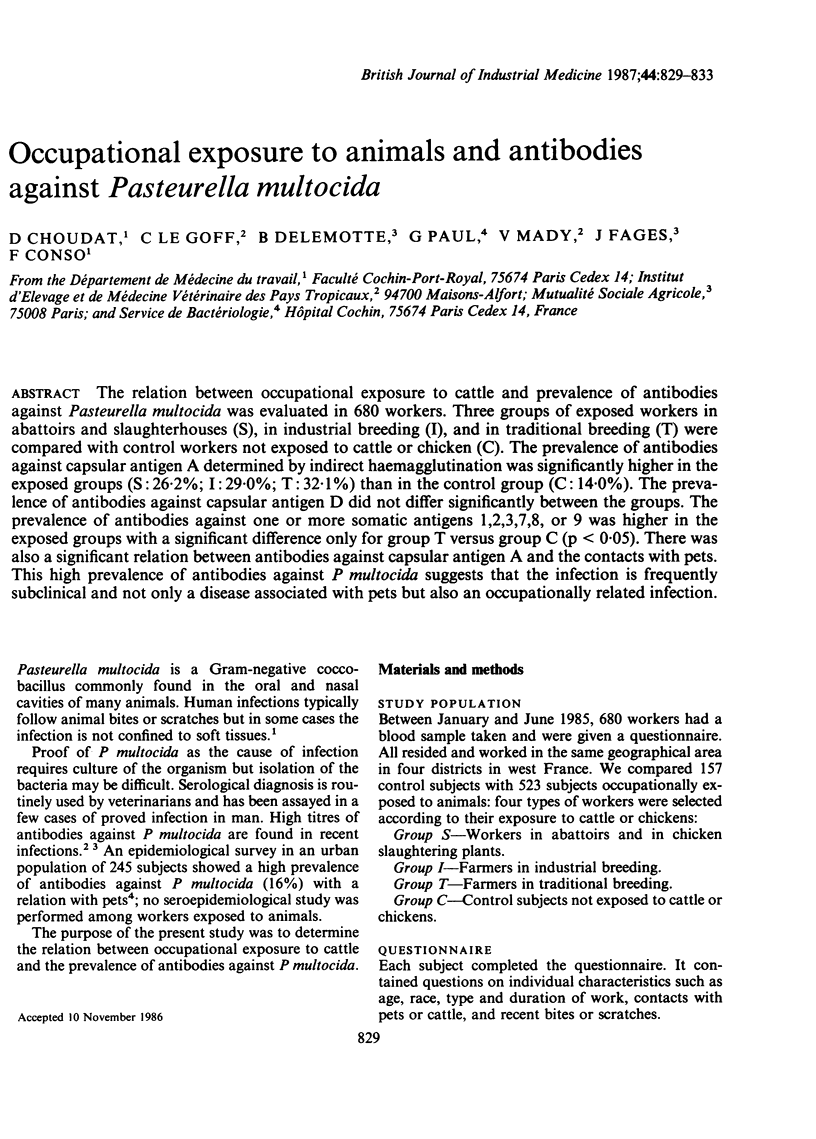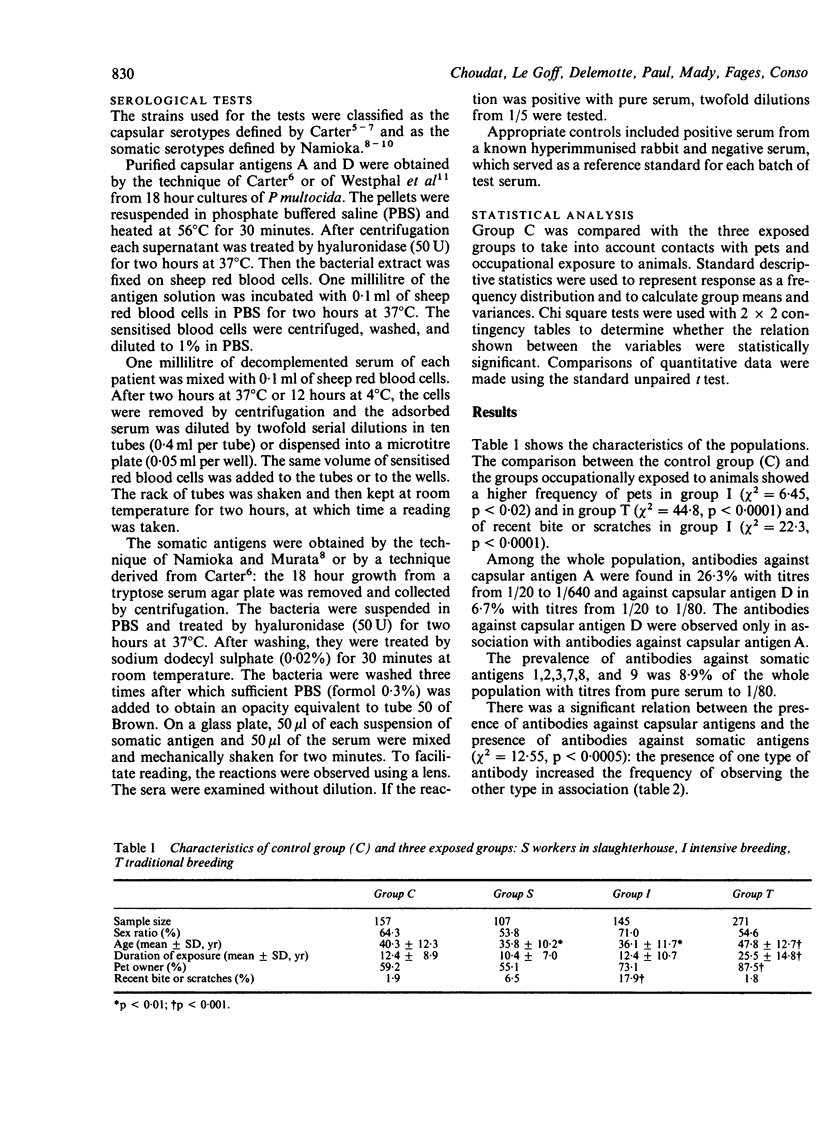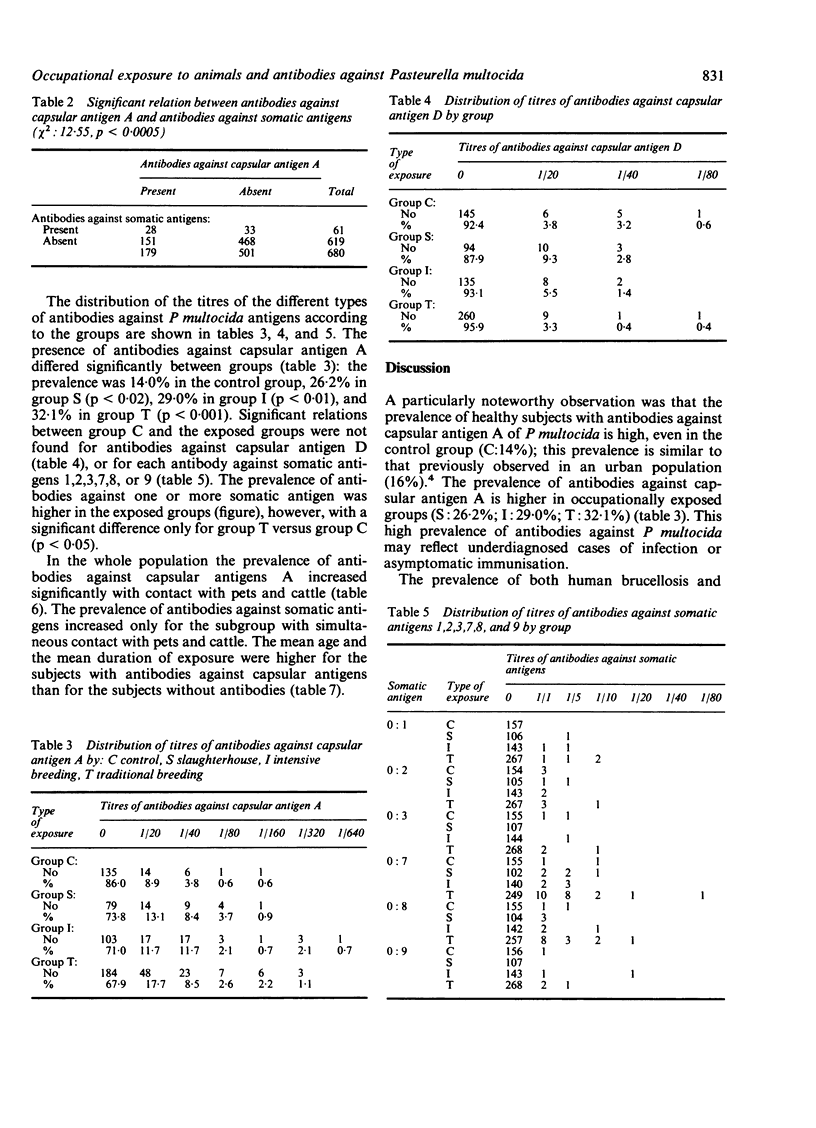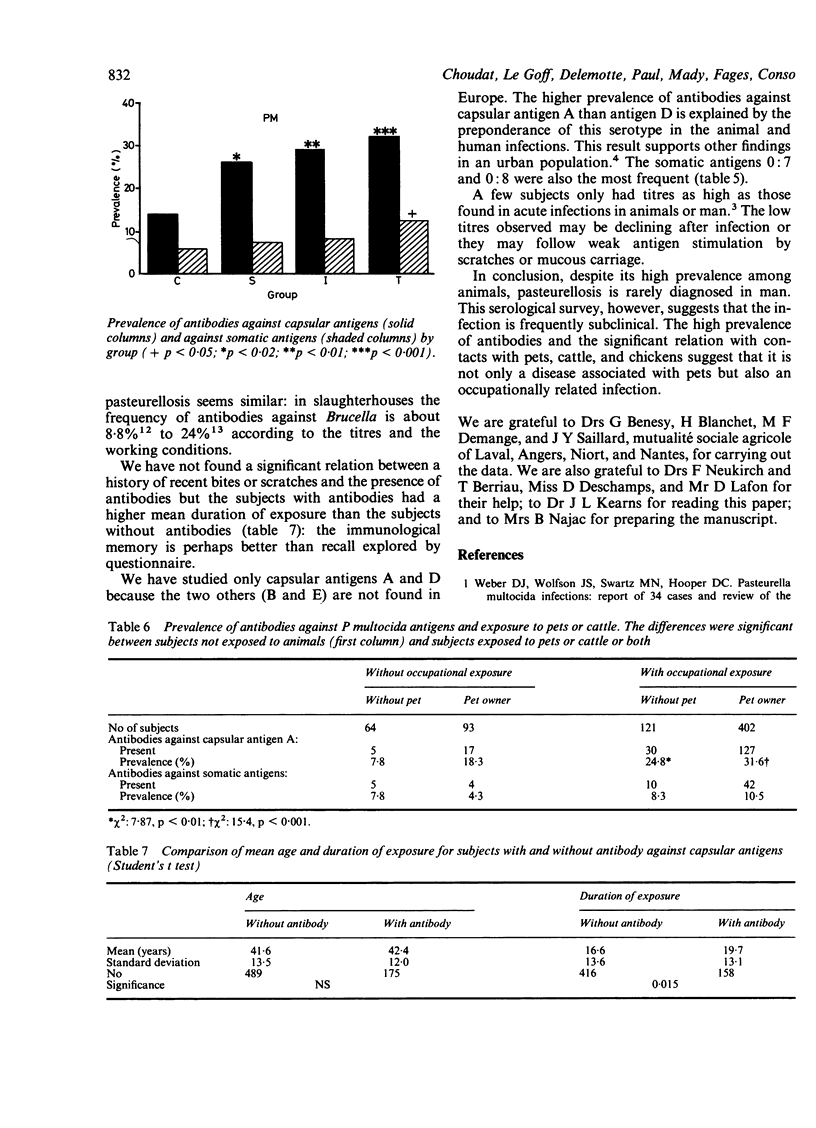Abstract
The relation between occupational exposure to cattle and prevalence of antibodies against Pasteurella multocida was evaluated in 680 workers. Three groups of exposed workers in abattoirs and slaughterhouses (S), in industrial breeding (I), and in traditional breeding (T) were compared with control workers not exposed to cattle or chicken (C). The prevalence of antibodies against capsular antigen A determined by indirect haemagglutination was significantly higher in the exposed groups (S: 26.2%; I: 29.0%; T: 32.1%) than in the control group (C: 14.0%). The prevalence of antibodies against capsular antigen D did not differ significantly between the groups. The prevalence of antibodies against one or more somatic antigens 1,2,3,7,8, or 9 was higher in the exposed groups with a significant difference only for group T versus group C (p less than 0.05). There was also a significant relation between antibodies against capsular antigen A and the contacts with pets. This high prevalence of antibodies against P multocida suggests that the infection is frequently subclinical and not only a disease associated with pets but also an occupationally related infection.
Full text
PDF




Selected References
These references are in PubMed. This may not be the complete list of references from this article.
- Alleyne B. C., Orford R. R., Lacey B. A., White F. M. Rate of slaughter may increase risk of human brucellosis in a meat-packing plant. J Occup Med. 1986 Jun;28(6):445–450. doi: 10.1097/00043764-198606000-00012. [DOI] [PubMed] [Google Scholar]
- CARTER G. R. Studies on Pasteurella multocida. I. A hemagglutination test for the identification of serological types. Am J Vet Res. 1955 Jul;16(60):481–484. [PubMed] [Google Scholar]
- CARTER G. R. The type specific capsular antigen of Pasteurella multocida. Can J Med Sci. 1952 Feb;30(1):48–53. doi: 10.1139/cjms52-008. [DOI] [PubMed] [Google Scholar]
- Guillausseau P. J., Paul G., Caquet R., Detilleux M., Laroche C. l. Evolution inhabituelle d'une pasteurellose humaine après morsure de chat. Nouv Presse Med. 1976 Jun 19;5(25):1579–1581. [PubMed] [Google Scholar]
- NAMIOKA S., BRUNER D. W. Serological studies on Pasteurella multocida. IV. Type distribution of the organisms on the basis of their capsule and O groups. Cornell Vet. 1963 Jan;53:41–53. [PubMed] [Google Scholar]
- NAMIOKA S., MURATA M. Serological studies on Pasteurella multocida. III. O antigenic analysis of cultures isolated from various animals. Cornell Vet. 1961 Oct;51:522–528. [PubMed] [Google Scholar]
- Soter N. A., Wasserman S. I., Austen K. F. Cold urticaria: release into the circulation of histamine and eosinophil chemotactic factor of anaphylaxis during cold challenge. N Engl J Med. 1976 Mar 25;294(13):687–690. doi: 10.1056/NEJM197603252941302. [DOI] [PubMed] [Google Scholar]


